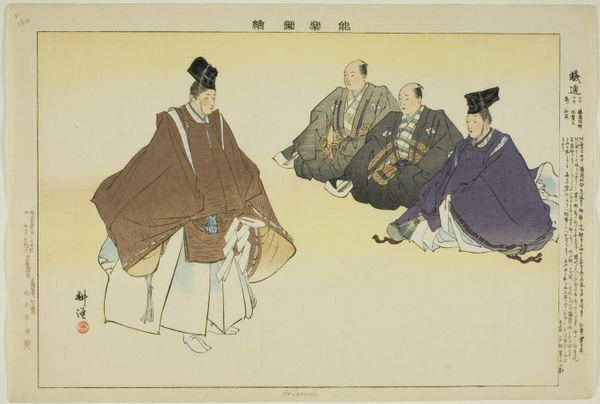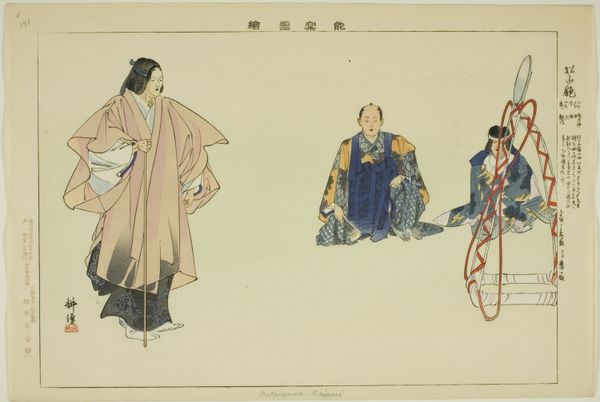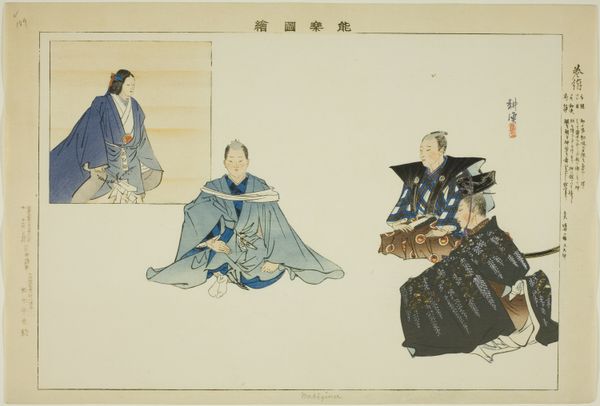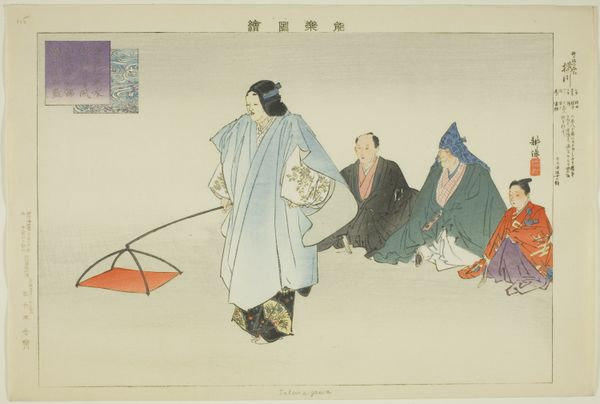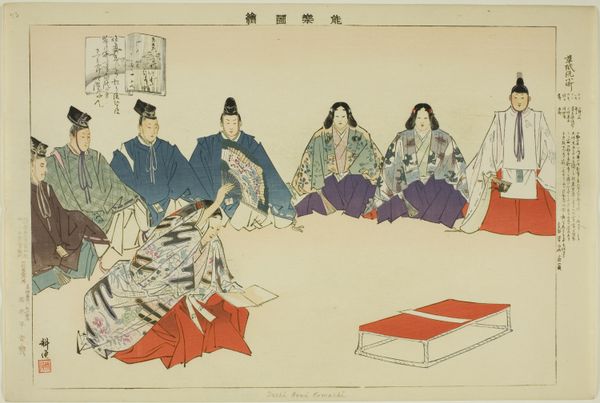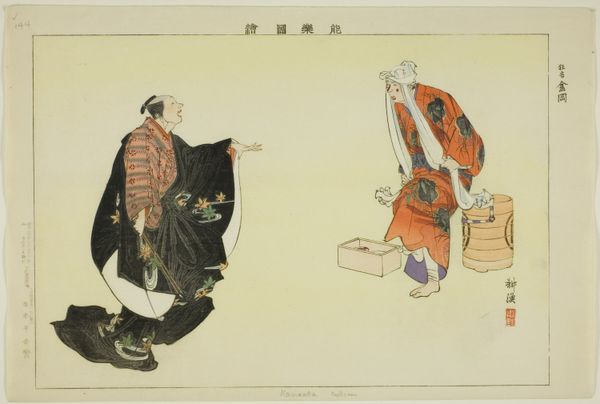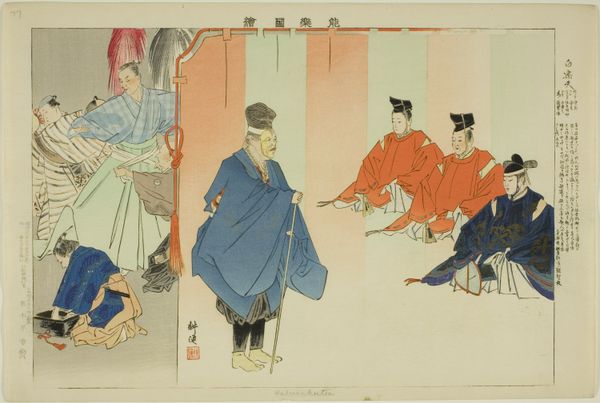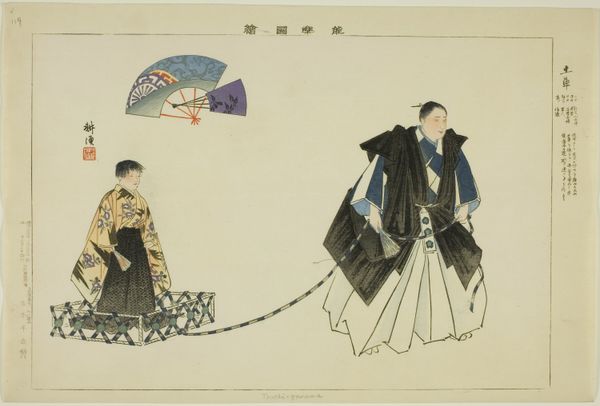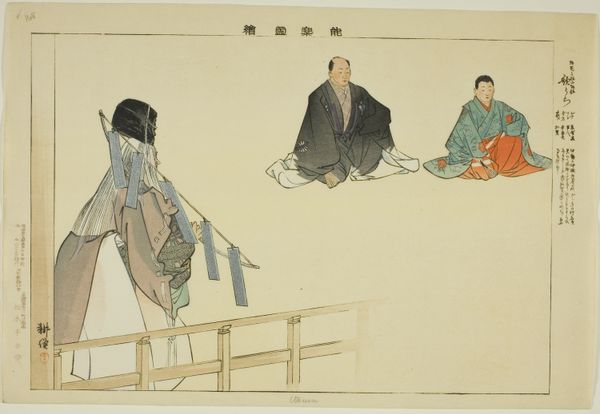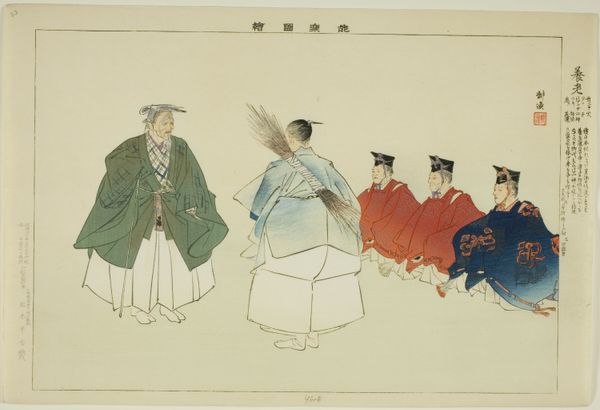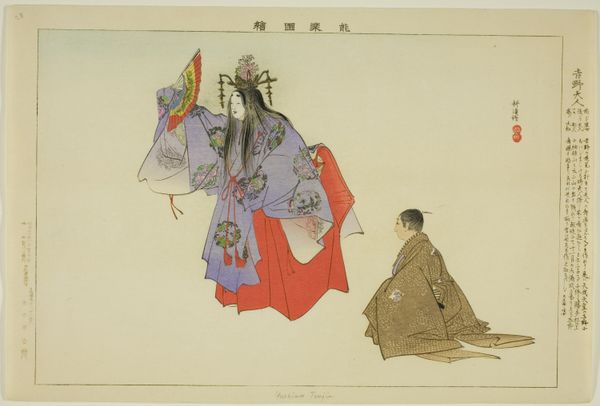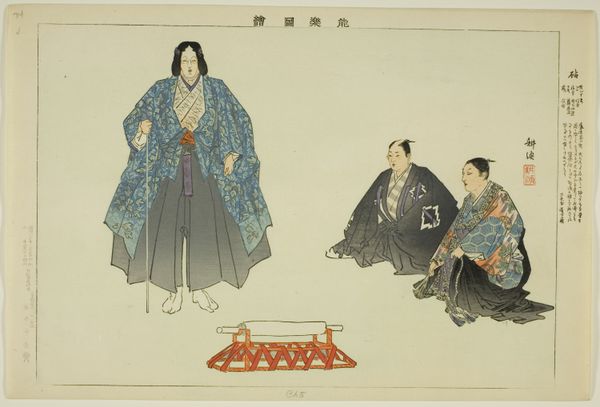
Ashikari, from the series "Pictures of No Performances (Nogaku Zue)" 1898
0:00
0:00
Dimensions: Approx. 25.2 × 37.4 cm (10 × 14 4/3 in.)
Copyright: Public Domain
Curator: I’m struck by the composition; there's a quiet stillness in this print, but also an underlying tension with the arrangement of figures. Editor: You’re right, a study in contrasts indeed. This woodblock print, created by Tsukioka Kôgyo in 1898, is titled "Ashikari," part of his "Pictures of No Performances (Nogaku Zue)" series, currently held at The Art Institute of Chicago. It's a fascinating glimpse into the Noh theatre tradition. Curator: I am especially drawn to the execution of the robes. The rendering suggests complex layers of fabric. And, of course, we can't ignore the implicit cultural production embedded in woodblock printing as an inexpensive art form with a great history in Japan. Editor: The institutional context is also crucial. Tsukioka Kôgyo was consciously documenting Noh at a time when traditional arts were being challenged by Westernization in Japan. Think about the role prints like this played in preserving cultural memory. Curator: I wonder about the distribution. What was the audience for this series? Were they consumers of Ukiyo-e more broadly? Connoisseurs of Noh performance, or some new hybrid public brought forth by modernization? Editor: Excellent question. My reading points toward these works appealing to educated middle class seeking connection to tradition while embracing modernity. They offer carefully researched details of costume, stage setting and the actual plots. Curator: Right. Each character a sort of vessel for the rich social and performance-based histories you're hinting at. How are those histories accessed, bought, sold, experienced by varied audiences? I am less inclined toward the narratives themselves as an art form and much more focused on their social context. Editor: Well, narratives and their accompanying material productions become intrinsically connected in any attempt to establish collective identities and values, so your material focus here becomes even more revealing! Curator: Indeed, something to consider. This really has offered a new appreciation for both printmaking and cultural memory! Editor: Agreed! Seeing the image through both of our lenses shows how deeply embedded the socio-political environment is within each element.
Comments
No comments
Be the first to comment and join the conversation on the ultimate creative platform.
